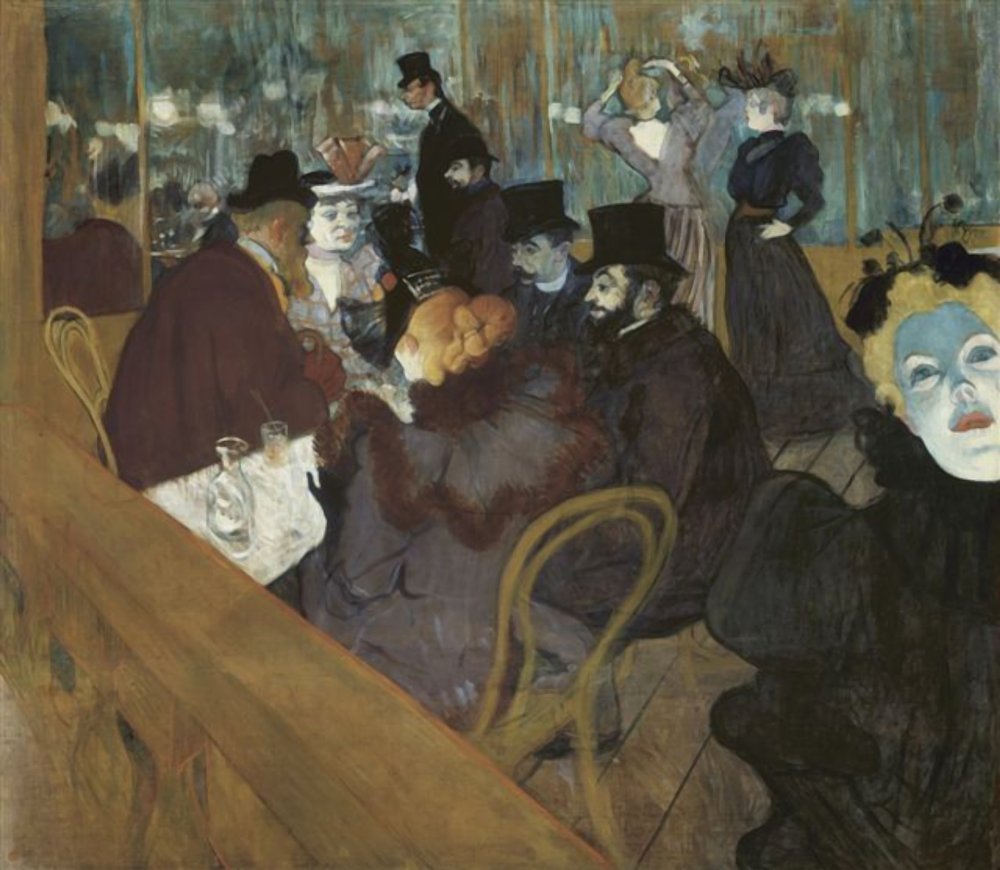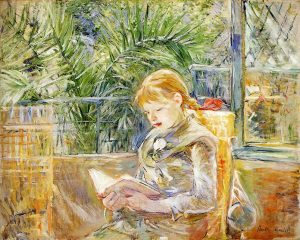Henri de Toulouse-Lautrec Biography
Henri de Toulouse-Lautrec’s biography is a sad one. Although he is famous and loved today for his paintings and posters, during his life he lived as an outcast and was an unhappy man.
Toulouse – Lautrec was born into aristocracy on November 24, 1864, in Albi, France. His parents were first cousins and were also descendants from previous instances of family inbreeding. As such, Henri de Toulouse-Lautrec and his cousins suffered related congenital health conditions.
Because of his fragile health condition, Toulouse-Lautrec’s legs broke when he was a young teenager and the breaks never properly healed.

Subsequently, his growth stunted and he only reached a height of 41/2 feet. His body had a full-length torso but abnormally short legs. As a result, he needed to walk with the assistance of a walking cane. If this wasn’t enough, he endured painful toothaches and facial deformities as well.
Today, it is thought that Toulouse-Lautrec suffered from a rare disorder called pycnodysostosis — also nicknamed the Toulouse-Lautrec Syndrome.
The influence of the Impressionism Art Movement on Toulouse-Lautrec

As an art student, Toulouse-Lautrec saw the seventh exhibition of the Impressionism painters in 1882 and loved their new ideas of ‘unfinished’ canvases and use of colors.
He began to try out their ideas, adopting modern subject matter, a lighter palette and feathery brushstrokes. While he did attempt to work outdoors, Toulouse-Lautrec made fun at the plein-air painting technique by saying:
“The country is so raw and chilly that it would be absolutely impossible to install a nude model on the grass”
Therefore, although influenced by the Impressionists, he felt no appeal to paint landscapes and capture the changing light.
Life in Bohemian Montmartre
In 1884, Toulouse-Lautrec moved to Montmartre in Paris, known for its bohemian life and vibrant art scene. This neighborhood had many ‘undesirable’ nightclubs, cabaret clubs, bars and brothels that attracted many Parisians from all over the city.
It was here in these seedy nightclubs where Toulouse-Lautrec felt most comfortable. Rather than be alone, night after night he went to these nightclubs, and in particular, to the famous Moulin Rouge.
Today Toulouse-Lautrec is most famous for his paintings and posters portraying the night life in the famous nightclubs.

He mostly painted the marginalized populations, including prostitutes, as this was how he saw himself – an outsider and alone.
Toulouse-Lautrec created works on canvas but also chose to display his works in the more popular medium of posters. He became highly sought after and famous for his unique style.
The Influence of Ukiyo-e Japanese Woodblock Prints
Around the 1850s, the Europeans were gaining access to Oriental culture, philosophies and arts. In particular, Japanese woodblock prints, also known as Ukiyo-e were very popular. The Impressionist and post-impressionist painters studied these prints and incorporated many of the features of Japanese woodblock prints into their own prints and paintings.
Toulouse-Lautrec totally embraced the exaggerated colors and facial expressions found in ukiyo-e Japanese woodblock prints in order to create his popular and striking posters. Below are some examples of his Japonisme style.
Dealing with his Disability
Although presenting himself as witty and fun, Toulouse-Lautrec suffered greatly due to his physical ailments. He also contracted syphilis, which further impacted his health.
For most of his adult life, Toulouse-Lautrec turned to alcohol to deal with his pain, loneliness and emotional suffering. He would ultimately drink himself into oblivion.

He had a nervous breakdown in 1899 after his mother died as he was very close to her. Afterwards, he committed himself into a sanitarium for several months.
Toulouse-Lautrec’s Artistic Legacy
Henri de Toulouse-Lautrec died on September 9, 1901 in Chateau Malrome in Saint-André-du-Bois at 36 years of age. Incredibly, he left behind more than 700 canvas paintings, 350 prints and posters and 5,000 drawings.

Toulouse-Lautrec paintings [Public domain]
Museums in France to see Toulouse-Lautrec’s Paintings & Artworks
- The greatest collection of Toulouse-Lautrec’s artworks are in the Musée Toulouse-Lautrec in Albi, his town of birth. Albi city is incredibly proud of their ‘son’ and have housed the museum in a beautiful former palace. The museum’s collection includes 31 posters , 219 paintings, 563 drawings and 183 lithographs. The artworks are from all periods in his life.
- Musee D’Orsay in Paris is famous for having the largest impressionism and post-impressionism collections in the world. Here you will find over 150 paintings, sketches, lithographs and posters of Toulouse-Lautrec.
Toulouse-Lautrec the Chef
Rather less well known is that in addition to being a brilliant artist, Lautrec was also an inventive chef. In the published book, The Art of Cuisine, you can find the amazing collection of his recipes. This book, published decades after his death, also provides many insights into his life and Paris in those times.
A fun fact about Toulouse- Lautrec
Toulouse-Lautrec was an alcoholic. He started drinking beer, and then graduated to wine and then to hard liquors, especially the potent liquor absinthe. In fact, it is said that the cocktail “Earthquake” is attributed to Toulouse- Lautrec.
Recipe – Half absinthe, Half cognac. Are you brave enough to give this a try??













Let's hear your comments!